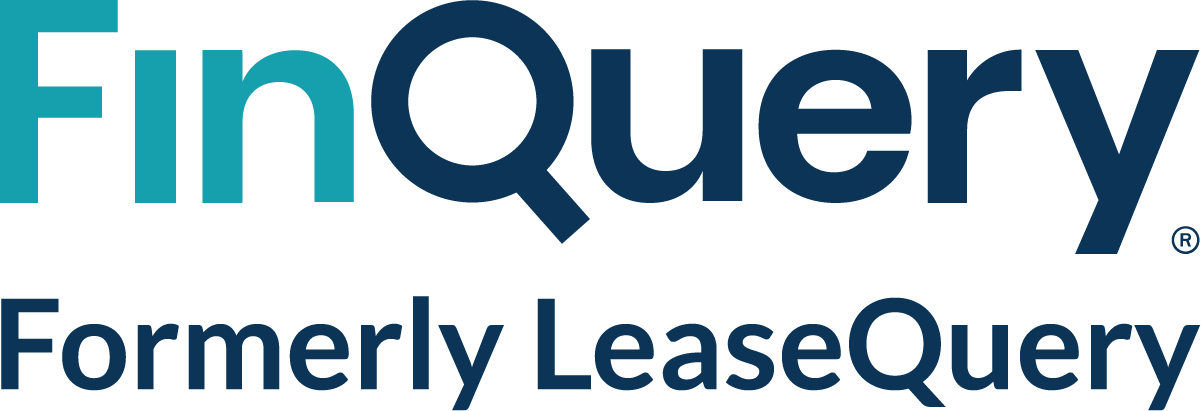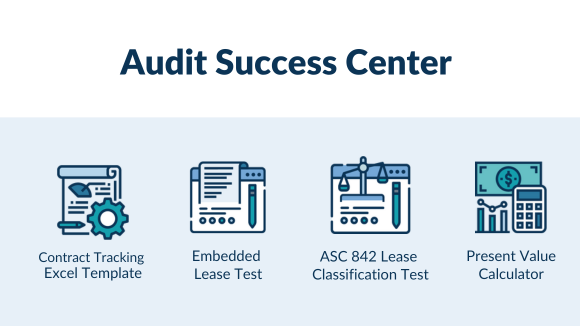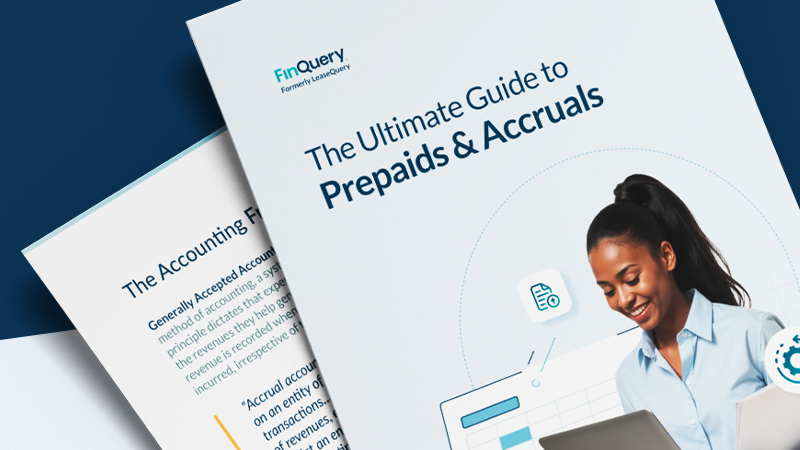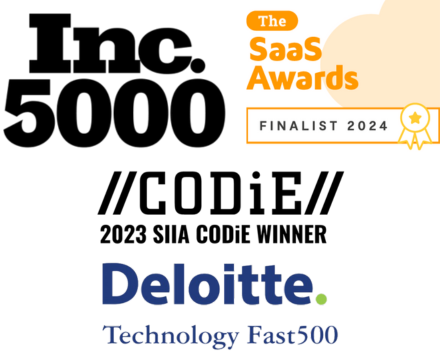1. What is lease accounting? 2. Understanding lessee vs. lessor Lessee definition Lessor definition 3. Lease accounting under the old standards 4. Lease accounting standards: changes and full examples ASC 842 IFRS 16 GASB 87 SFFAS 54 FRS 102 5. Why were new standards...
CONTENT BY
Prepaid Rent and Other Rent Accounting for ASC 842 Explained (Base, Accrued, Contingent, and Deferred)
1. Rent explained 2. Accounting for rent under the new lease accounting standards 3. Base rent Accounting for base rent with journal entries 4. Prepaid rent Is prepaid rent an asset? Accounting for prepaid rent with journal entries 5. Accrued rent Accounting for...
Streamline Your Lease Accounting with Catch-Up Lease Actions
Accounting is often seen as a profession focused on the past, meticulously recording and reporting financial activities that have already occurred. While finance predicts the future and operations manage the present, accountants diligently keep the financial records....
Commercial Lease Overview: Lease Types, Management, Accounting, & More
1. Understanding commercial lease agreements Commercial leases of equipment 2. Commercial lease management Lease management software 3. Commercial lease types Gross lease / full-service lease Net lease Absolute net lease or "absolute NNN lease" Modified gross lease...
Financial Contract Management: A Guide for Finance Teams
1. What is financial contract management? 2. Benefits of financial contract management Central repository Visibility Ease of use 3. How these features facilitate budgeting Single source of truth Critical date knowledge Research effectively Visible obligations Quicker...
Software Capitalization Rules under US GAAP and GASB
1. Software Capitalization Rules under FASB and GASB 2. Types of software Purchased software Internally-developed software Software as a Service (SaaS) 3. SummarySoftware Capitalization Rules under FASB and GASB The capitalization of software development costs was a...
What is SaaS License Management Software?
License management software explained With the ongoing technology boom, many companies are turning to software solutions to help manage their data, including license management software. License management software is a type of asset management software that helps...
Depreciation Expense & the Straight-Line Depreciation Method Explained with a Fixed Asset Example & Journal Entries
1. What is depreciation? Depreciation expense Accumulated depreciation 2. Depreciation methods in accounting Straight-line method of depreciation Declining balance method of depreciation Sum-of-the-years’-digits depreciation method Units of production depreciation...
Why Fixed Asset Software Isn’t Suitable for the New Lease Accounting Standards
Prior to the introduction of the new lease accounting standard, ASC 842, many organizations grouped their leased assets along with their fixed assets. The organization likely placed assets financed with a capital lease on the balance sheet as “capital assets” and...
Qualitative Disclosures for the New Lease Accounting Standards: What You Need to Know
Footnote disclosures are a critical component of an entity’s financial reports helping users of the financial statements better understand the entity’s operations, financial results, and significant accounting policies. Most required disclosures have a numbers section...
May 2022 GASB Update: Statement No. 99 Explained (GASB 87 & GASB 96)
On May 9, 2022 the GASB issued Statement No. 99 Omnibus 2022 (GASB 99) providing clarification guidance on several of its recent statements, including GASB Statement No. 87 Leases (GASB 87) and GASB Statement No. 96 Subscription-Based Information Technology...
GASB 87 & GASB 96 Efficiencies: Similarities, Differences, Adoption Tips, & More
The effective date for GASB 87 has passed, but GASB 96 is just around the corner. Many companies working towards compliance with GASB 87 can save time and resources by adopting GASB 96 simultaneously. This article provides a comparison and contrast of both standards,...
ASC 805 Business Combinations & Lease Accounting Explained
1. Accounting for a business combination Favorable and unfavorable leases Leases obtained in a business combination under ASC 840 Leases obtained in a business combination under ASC 842 Transitioning leases obtained in a business combination under ASC 840 to ASC 842...
Asset Retirement Obligation (ARO) Accounting under ASC 410 and ASC 842 Explained with Example
1. What is asset retirement in accounting? 2. What is an Asset Retirement Obligation (ARO)? 3. ASC 410: ARO accounting and environmental obligations ASC 410-20 and interactions between ASC 410 and ASC 842 How to perform the accounting for an ARO What is accretion...
The Benefits of Early Adoption of ASC 842 and GASB 87
The new lease accounting standards are coming whether you’re ready for them or not. Preparing to adopt GASB 87 and ASC 842 is a formidable endeavor. While many public companies have already undergone the process, private companies are still in the midst of the...
Impact of the Lease Accounting Transition and COVID-19 on Balance Sheet Liabilities
1. Lease liabilities increase after adopting new standards 2. Private companies need to prepare for challenges ahead 3. 10 key industries affected by lease accounting compliance and economic change 4. Summary 5. Related articlesIn 2020, many companies saw an increase...
Equity Method Accounting for Distributions Exceeding the Carrying Value (ASC 323)
1. Equity method 2. Accounting for distributions exceeding carrying value 3. Cash flow classification Cumulative earnings approach Nature of distribution approach 4. Example: Accounting for an equity method investment when distributions exceed the carrying value...
GASB 87 Lessor Accounting Example with Journal Entries
1. Lessee vs lessor accounting 2. Lessor accounting under GASB 87 An example of lessor accounting for a lease under GASB 87 3. GASB 87 RFP Template 4. Summary 5. Related articlesLessee vs lessor accounting Government entity lessees reporting under GASB are required to...
ASC 350-40: Internal-Use Software Accounting & Capitalization
1. FASB internal-use software standard 2. Effective date of ASC 350-40 3. The need for clarity Capitalizable vs. non-capitalizable 4. Updates to ASC 350-40 Capitalizable vs. non-capitalizable software costs 5. Initial measurement and subsequent measurement Initial...
The Equity Method of Accounting for Investments and Joint Ventures under ASC 323
1. What is the equity method of accounting? 2. When do you apply it? 3. How to determine if the equity method is applicable 4. Accounting for an equity method investment 5. Required disclosures 6. Example: Accounting for an investment using the equity method 7....
Off-Balance-Sheet Financing (OBSF) and Liabilities Impacted by New Operating Lease Accounting Rules
1. Off-balance-sheet financing 2. Examples of off-balance-sheet liabilities 3. OBS accounting activities targeted by the Boards 4. Off-balance-sheet leases: How were they recorded? 5. Recording capital leases on the balance sheet under ASC 840 6. Benefits of...
Lease Purchase Options and More Intersections of Fixed Assets and Lease Accounting Explained with a Full Example
1. Capitalization of leases and fixed assets ASC 840 – Capital leases and fixed assets on the balance sheet ASC 842 – Operating leases now capitalized Accounting for finance leases vs operating leases 2. Similarities in accounting policies Capitalization thresholds –...
FASAB Overview (Federal Accounting Standards Advisory Board)
1. What is FASAB? 2. Who reports under FASAB? 3. What is US GAAP? FASB explained GASB explained SEC explained 4. Summary 5. Related articlesWhat is FASAB? The Federal Accounting Standards Advisory Board, or FASAB, is the body that regulates generally accepted...
New Self-Study CPE Offering: Access Premium Educational Content at Your Convenience, Free of Charge
We are excited to announce the expansion of our free Continuing Professional Education (CPE) program. This enhancement includes a highly anticipated self-study offering, designed to drive professional growth and keep accounting professionals up-to-date. Why this...
Bonds Payable: Understanding the Basics of Accounting for Bonds
1. What are bonds payable? Interest in bonds Discount vs. premium Issuance costs 2. Bonds payable accounting Amortization of the discount or premium 3. Summary 4. Related articlesWhen an organization requires additional funds, a common action is to borrow money from a...
The Operating Budget: A Step-by-Step Approach
1. Operating budget defined What is the importance of the operating budget? Operating budget vs. capital budget 2. Creating operational budgeting goals Increasing revenue Cutting expenses 3. Largest expenses of the operating budget People expense Rent expense Saas...
The Impact of AI in Accounting: Embracing the Future of Finance
In an era defined by technological advancements, the landscape of accounting is undergoing a profound transformation - and just in the nick of time. The media is flooded with warnings about the lack of accountants. As businesses seek to optimize their financial...
ASC 840 vs ASC 842: Differences between the Old and New Lease Accounting Standards
1. ASC 840 summary Balance sheet recognition for operating leases ASC 840 to ASC 842 transition date 2. ASC 840 vs ASC 842 Determination of lease classification Lease classification criteria Lease payments, executory costs, and tenant improvement allowances Fair value...
Related Party Leases under ASC 842: Review of the Accounting Changes
Update to ASC 842 for Common Control Arrangements Common control leasing arrangements are frequent among private companies for various reasons, including tax planning and legal liability. However, private companies have found applying ASC 842 to these types of leases...
Debt Accounting under ASC 470 and GASB 34: Overview, Loans/Notes Payable, and Bonds Payable
1. Introduction to debt accounting 2. Financial statement recognition Initial measurement and recognition Short-term vs. long-term classification Subsequent measurement and amortization 3. Types of debt Secured vs. unsecured debt Notes payable and loans payable Bonds...
Accrued Rent Accounting under ASC 842 Explained
1. What is accrued rent? Accrued rent vs. deferred rent 2. Accounting for accrued rent with journal entries Accounting for accrued rent under ASC 840 Accounting for accrued rent and deferred rent under ASC 842 3. SummaryWhat is accrued rent? Accrued rent is a...
Initial Direct Costs under ASC 842 Explained: Summary, Full Example
1. What are initial direct costs? Definition of initial direct costs ASC 840 treatment of initial direct costs 2. Initial direct costs under ASC 842 What changed? Accounting treatment under ASC 842 3. Example: Initial direct costs under ASC 842 4. Summary 5. Related...
Determining the Correct Dates & Lease Term from a Lease Agreement under ASC 842
1. Determining which dates to capture from a lease agreement Where are the important dates in a lease contract? 2. What is the lease term? How to determine the lease term Financial impact of the lease term 3. Summary 4. Related articlesDetermining which dates to...
Investment Accounting Methods under US GAAP Explained
What is an investment in accounting? You have probably heard of stock investments, and the term “investment” may lead you to immediately envision stocks, bonds, and mutual funds. While this line of thinking is correct, accountants view investments as this and much...
GASB 87 for Higher Education: What You Need to Know for Compliance
With the first semester of the 2021-2022 school year barreling to a close and annual reporting in the rearview mirror, it’s time to look ahead to the next big accounting project – GASB 87 compliance. The new guidance replaces lease accounting rules covered by GASB 13...
GASB 87 Accrued Interest Example: Calculating the Liability Amortization
1. What is accrued interest? 2. Example: Accrued interest for a lease under GASB 87 Amortization schedule for the lessee Governmental fund accounting Conversion entries Proprietary fund accounting 3. Summary 4. Related articlesThe new lease accounting standard for...
Accounting for Partial Disposals of Equity Method Investments under ASC 323
1. Equity method 2. Equity method of accounting Partial disposal Example: How to account for an equity method disposal resulting in a loss of significant influence 3. Summary 4. Related articlesThis article is part of a series of articles covering equity method...
Accounting for Loss from Equity Method Investments
1. Equity method 2. Loss from equity method investments Example of accounting for equity method losses in excess of investment 3. Summary 4. Related articlesThis article is part of a series of articles covering equity method accounting in accordance with ASC 323...
Goodwill and Basis Differences in the Equity Method of Accounting (ASC 323)
1. Equity method of accounting when basis differences exist What are basis differences and how do you identify them? How do basis differences impact equity method accounting? An example of equity method accounting with basis differences 2. Summary 3. Related...
How to Calculate Interest Rate Implicit in the Lease for GASB 87
1. What is the implicit rate under GASB 87? Implicit rate: Understanding GASB 87 vs ASC 842 Example of calculating the rate implicit in the lease Validating the rate implicit in the lease 2. Summary 3. Related articlesUnder GASB Statement No. 87, Leases, the majority...
IRS Section 179, ASC 842, and the Impact on Lease vs. Buy Decisions
1. Understanding IRS Section 179 Section 179 and bonus depreciation 2. How IRS 179 affects lease vs. buy considerations 3. How new lease guidance affects lease vs. buy decisions 4. Getting it right with a collaborative decision-making process 5. Related...
ASC 842 Disclosure Requirements: Example and Explanation
1. A focus on quantitative disclosures for lessees 2. Why software makes generating disclosures more accurate and efficient 3. Looking at quantitative disclosures in four “buckets” Lease costs Other information Weighted averages Maturity analysis 4. Related...
Lessor vs. Lessee: Differences, Accounting, & More Explained
1. Lessee meaning 2. Lessor meaning Lessor vs. lienholder 3. Who are the lessor and the lessee in rental agreements? Commercial real estate Lessor and lessee in subleases Sale-leaseback transactions 4. What is lessor’s risk insurance? 5. Differences in lessor vs....
Making the Business Case for Financial Contract Management Software
Finance and accounting professionals are tasked with managing the financial health of their organization, including identifying cost savings opportunities, improving operational efficiency, and accurately budgeting and forecasting. To do this, they need visibility...
Financial Contract Types and More Explained for CFOs and Finance Pros
Navigating corporate finance requires a solid understanding of financial agreements essential for CFOs and finance professionals. These contracts play a vital role in corporate finance, helping businesses manage risks, secure funding, and facilitate mergers and...
Adjustments and Reclasses in Accounting: Understanding the Basics
Adjustments are made at the close of an accounting period to rectify errors, record unaccounted income or expenses, and maintain the integrity of financial records to prepare comprehensive financial statements. This ensures financial data accurately reflects the...
Financial Contract Tracking: What You Need to Know
It's that time of year for accountants and finance professionals - the calm before the storm. The auditors left their PBC list when they were doing some interim work in November. If you can just pull together all the various contracts and supporting documentation they...
Fixed Asset Accounting Explained with Examples, Journal Entries, and More
1. What are fixed assets? Fixed asset examples Current assets vs. long term assets Tangible vs. intangible assets Right-of-use assets vs. fixed assets Operating vs. non-operating assets Capitalization policy and materiality Total fixed assets vs. net fixed assets 2....
What Nonprofits Need to Know About ASC 842
ASC 842 at a glance ASC 842 is the new FASB lease accounting standard. It governs how entities record the financial impact of their lease agreements. The biggest change is the standard now requires all public and private entities reporting under US GAAP to record most...
What Are Fixed Assets? Fixed Assets in Accounting Explained
1. What are fixed assets? 2. What are the three types of fixed assets? 3. What are some examples of fixed assets? 4. How do you account for fixed assets? 5. How do you calculate fixed assets? 6. What are the advantages of fixed assets? 7. What are the disadvantages of...
Lease vs. Buy Analysis and Calculator for Business – How to Determine When to Lease or Buy an Asset
1. Benefits of leasing vs. buying Benefits of leasing Benefits of buying Disadvantage of leasing Disadvantage of buying 2. Lease vs. Buy Analysis: Five Factors to Consider 1. How long will you need the item and how much is it worth? 2. What is feasible for your...
Determining the Correct Dates & Lease Term from a Lease Agreement under GASB 87
1. Determining which dates to capture from a lease agreement Where are the important dates in a lease contract? 2. What is the lease term? Short-term lease Additional lease term considerations Termination options Financial impact of the lease term Changing the lease...
Lease Payments: Establishing the Initial Lease Liability & ROU Asset under ASC 842
1. Fixed payments Fixed vs. variable payments 2. In-substance fixed payments 3. Variable payments that depend on an index or rate 4. Additional payments 5. Lease vs. non-lease components Lease vs. non-lease components: Practical expedient 6. Discount rates 7. Summary...
Goodwill in Accounting Overview: Definition, How to Calculate It, and More
What is goodwill? Goodwill is an intangible asset resulting from the purchase of an entity for more than its fair market value. The concept of goodwill is used when an entity is acquiring another entity. It is recorded when the buying price is more than the sum of the...
ARO (Asset Retirement Obligation) Accounting Example for Oil and Gas Production
Asset Retirement Obligations (ARO) are commonly associated with industries such as oil and gas, mining, waste disposal, or nuclear energy. Some examples specific to the oil and gas industry include oil well plugging and abandonment and underground storage tank...
GASB 51 vs. GASB 96: Similarities and Differences in Accounting Treatment
1. What is GASB 51? History of GASB 51 2. What is GASB 96? Why is GASB 96 necessary? 3. Similarities between GASB 51 and GASB 96 4. Differences between GASB 51 and GASB 96 5. Summary 6. Related articlesWhat is GASB 51? GASB Statement No. 51 Accounting and Financial...
FASB Proposes Amendment for Guidance on ASC 842 Discount Rate
On June 16, 2021, the FASB issued a proposed Accounting Standard Update (ASU), or amendment to ASC 842. The amendment affects private companies and not-for-profits that have not yet adopted ASC 842. The proposed change provides additional guidance and flexibility for...
Calculating a Lease Liability Amortization Schedule in LeaseGuru Accounting Software
1. What is LeaseGuru? What is a lease liability? How to calculate the lease liability amortization schedule in LeaseGuru 2. Why should I use LeaseGuru if I can create amortization schedules in Excel? 3. Does LeaseQuery offer a solution for businesses with more than 15...
Practical Expedient in Accounting Explained: Adopting ASC 842 and IFRS 16 with Ease
1. What is a practical expedient? 2. Accounting transition methods Transition method for ASC 842 Transition method for IFRS 16 3. Transition practical expedients The package of practical expedients No reassessment of lease classification No re-evaluation of embedded...
Financial Statement Audits for Leases: Assessing Risks and Controls
1. Assessing risks and controls Process documentation Internal control design for ASC 842 Assessing risks and controls With the implementation of the new lease accounting standard, ASC 842, new financial statement and process risks emerge for private companies. As...
Preparing for Your First Post-Transition Lease Accounting Audit
When the FASB released its new lease accounting standard in 2016, and GASB in 2017, lease accounting was revolutionized. Hailed as one of the biggest changes to accounting in decades, it quickly became clear that the impact on the balance sheet would be significant....
How to Account for Partial Lease Terminations
1. Is it a termination? 2. How to account for a termination Reassessing classification Remeasuring the lease liability Remeasuring the right-of-use asset 3. Partial termination accounting with example Approach 1: Proportionate change in the lease liability Approach 2:...





